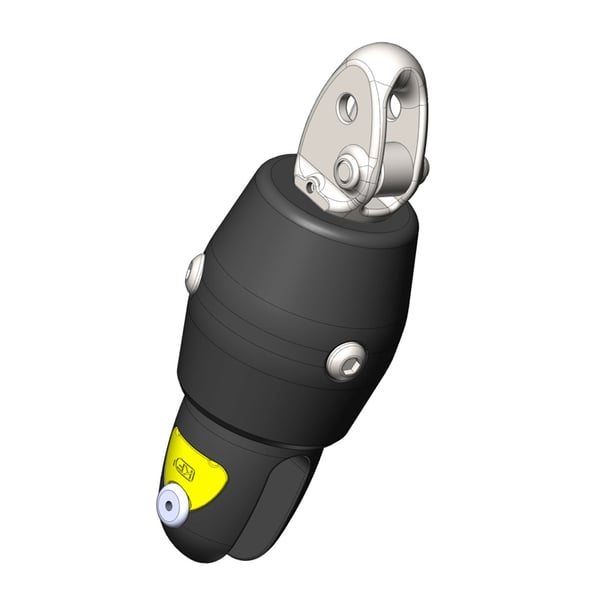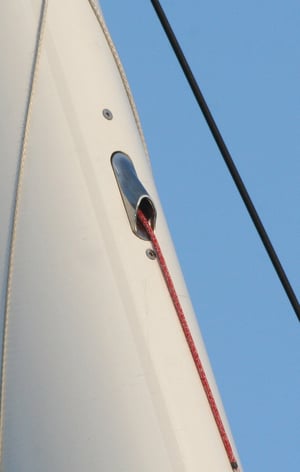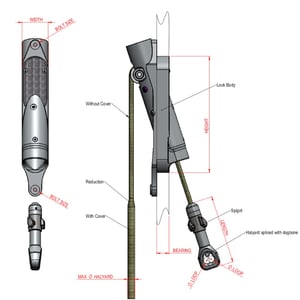 (Image: Karver KFH1)
(Image: Karver KFH1)
By: Nick Black / Andy Rice
Most modern boats today have a form of top-down furling. If you don’t already use this method of sail handling, it’s worth considering a retrofit. Compared with hoisting and dropping spinnakers and gennakers in the conventional way, and all the potential for mistakes that go with that, top-down furling is a much more user-friendly and less risky way of handling big downwind sails.
Code 0s and asymmetrics are more prevalent than ever, and with the rising acceptance and confidence in the reliability of locking systems, there are some interesting options coming onto the market. The new generation of swiveling locks combine a tripless locking system with a high-performance bearing system. An enormous amount of R&D has gone into the development of these fittings, which is why for many people they are also eye-wateringly expensive. Facnor and Karver both offer versions of this technology.
In the absence of many swivelling lock options, performance race boats use a standard internal lock and attach a standard swivel to the bullet. But if you’re looking for a more affordable and still very functional alternative, where you’re not so bothered about a bit more weight or windage, a perfectly good solution is a standard external lock with a swivel attached to it. This option brings down your costs to a more reasonable level.

It’s also worth noting that most aluminium rigs are sufficiently overbuilt that you can afford to cut a hole in it without any need for extra reinforcement. If you believe your rig is up to the modification, an inexpensive and very workable option is to cut a hole in the front of the mast and install a standard internal tripless lock and attach a swivel.

(Image: Facnor internal lock can we used with a standard swivel attached to the bullet to create a swiveling lock)
One thing to bear in mind with any furling lock system is that you will need to release some tension from the system before you attempt to lower the sail. You can't be sailing at full stay tension and expect to be able to get it off-lock. You will be using quite a small halyard (or hoist line), so before you aim to get the sail off lock you’ll want to point the boat somewhere close to dead downwind and ease the tack line up a bit on the sail. Then you’ll be able to get off-lock without too much of a problem.
If you have any questions about swivel locks, please feel free to email us at support@upffront.com, or click the link below to see our full range:
About the authors
Co-owner of independent rigging company, Rigging Projects, Nick Black is one of the most sought-after riggers in the business. One way or another Nick’s work has made its way into most of the top tiers of the sport - the America’s Cup, Volvo Ocean Race, Vendée Globe, the grand prix circuits like the TP52s, and in the superyacht scene.
Andy Rice is a UK-Based European and National Title holder for various types of Racing boats. He started his career in yachting journalism in 1992, writing for Seahorse Magazine. Rice now works as a journalist and copywriter for many different clients and magazines. In between his Sailing Intelligence commitments, he still manages to write regular columns for Seahorse, ShowBoats International, Yachts & Yachting and Boat International.


